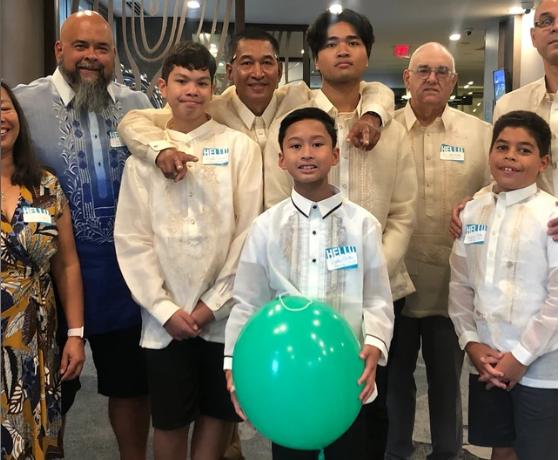The Ultimate Guide To Pinoy Fashion And Trends
“The Ultimate Guide to Pinoy Fashion and Trends” would definitely be a great way to explore the diverse, dynamic world of Filipino style! Here’s a breakdown of key themes and elements that make Pinoy fashion stand out:
1. Traditional Filipino Wear
- Barong Tagalog: This iconic piece for men, often made from lightweight fabrics like piña or jusi, is a blend of elegance and cultural significance. The women’s counterpart, the Baro’t Saya (or Filipiniana), offers a graceful silhouette with a variety of fabric choices.
- Filipiniana Gowns: For women, the Filipiniana offers a fusion of European and Filipino elements, especially in formal settings. Its signature butterfly sleeves are always a classic touch.
- Terno: Known for its structured silhouette, the Terno is often worn for formal events and is recognized by its dramatic butterfly sleeves.
2. Contemporary Filipino Fashion
- Streetwear & Street Style: Filipino youth have embraced streetwear culture, with local brands merging international trends with Filipino flair. Graphic tees, sneakers, and caps are common, often reflecting pride in Filipino heritage through national symbols or quirky takes on Filipino pop culture.
- Sustainable Fashion: Filipino designers are increasingly turning towards eco-friendly and sustainable materials. This trend emphasizes the use of local, organic textiles like abaca (banana fiber), t’nalak (woven fabric from the T’boli tribe), and piña fabric.
- Fashion Collaborations: Local designers collaborate with international names, creating a fusion of global and local designs, and promoting Filipino craftsmanship abroad.
3. Filipino Textile Innovation
- Piña Fabric: A traditional fabric made from pineapple fibers, it’s lightweight, elegant, and often used for formalwear like the Barong or Filipiniana. Its delicate nature gives it a unique texture and visual appeal.
- Abel Fabric: This handwoven textile from the Ilocos region is known for its durability and bright, geometric patterns. It’s becoming a popular choice for modern designers, who incorporate it into contemporary pieces like jackets and bags.
- Banig Weaving: Made from woven palm leaves, banig has transformed into a fashion statement, from accessories to bags and shoes.
4. Local Fashion Designers
- Ramon Valera: A National Artist of Fashion Design, Valera is known for making the Terno a global fashion statement. His pieces celebrate traditional Filipino craftsmanship.
- Rajo Laurel: A household name in modern Filipino fashion, Laurel mixes traditional elements with contemporary chic, making him a top designer in the Philippines and internationally.
- Francis Libiran: Known for his high-end creations, Libiran often uses piña and other indigenous textiles in his glamorous pieces.
5. Filipino Fashion Icons and Influencers
- Anne Curtis, Heart Evangelista, and Pia Wurtzbach are just a few celebrities who showcase Filipino talent through their red carpet and casual fashion looks.
- Social Media Influencers like Camille Co, Laureen Uy, and Liza Soberano help shape the modern Pinoy fashion landscape, often blending Filipino craftsmanship with global trends.
6. Filipino Fashion in Global Runways
- Filipino designers are becoming more visible on the global fashion stage. Events like Manila Fashion Festival and Philippine Fashion Week continue to show the world how the local fashion scene is thriving with modern flair while staying deeply connected to cultural roots.
7. Cultural and Regional Influences
- Mindanao: Many fashion designers are drawing inspiration from Mindanao’s indigenous groups, incorporating tribal patterns, woven fabrics, and unique color schemes into contemporary designs.
- Visayas and Luzon: Traditional garments and textiles from different islands influence a variety of local designs, from intricate embroidery in the Visayas to bold prints and vivid colors from the Ilocos region.
8. Festivals and Fashion
- Pahiyas Festival (Quezon) and Sinulog Festival (Cebu): These festivals are not only vibrant in their celebrations but also showcase elaborate, colorful costumes and fashion expressions.
- Barong-inspired Designs: For men, modern takes on the Barong—such as casual button-down versions made from natural fabrics—are popular during festive seasons, especially for weddings or special events.
9. The Influence of Filipino Pop Culture
- K-Pop and Western Fashion: The Filipino youth have been greatly influenced by K-Pop culture, often blending it with Filipino sensibilities. Bright colors, bold prints, and fun accessories are common in this cross-cultural style.
- “Filipiniana Remix”: Designers are also reimagining the Filipiniana gown with modern twists—experimenting with silhouettes, colors, and fabric choices.
This guide could serve as a comprehensive resource for those interested in Filipino fashion. Whether you’re celebrating Filipino culture through traditional pieces or looking to explore the future of local fashion trends, there’s always something to discover.
What part of Pinoy fashion interests you the most? Are you into modern trends or traditional pieces, or maybe a bit of both?

Comments
Post a Comment